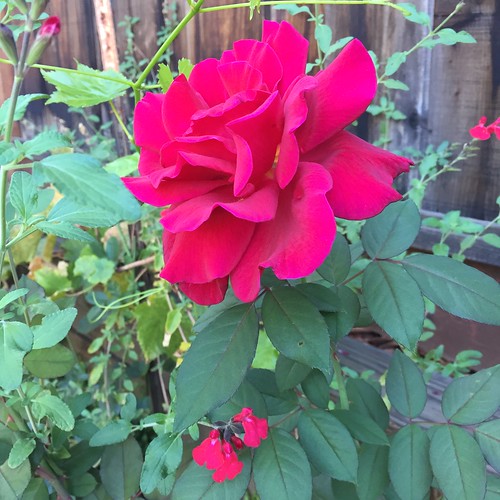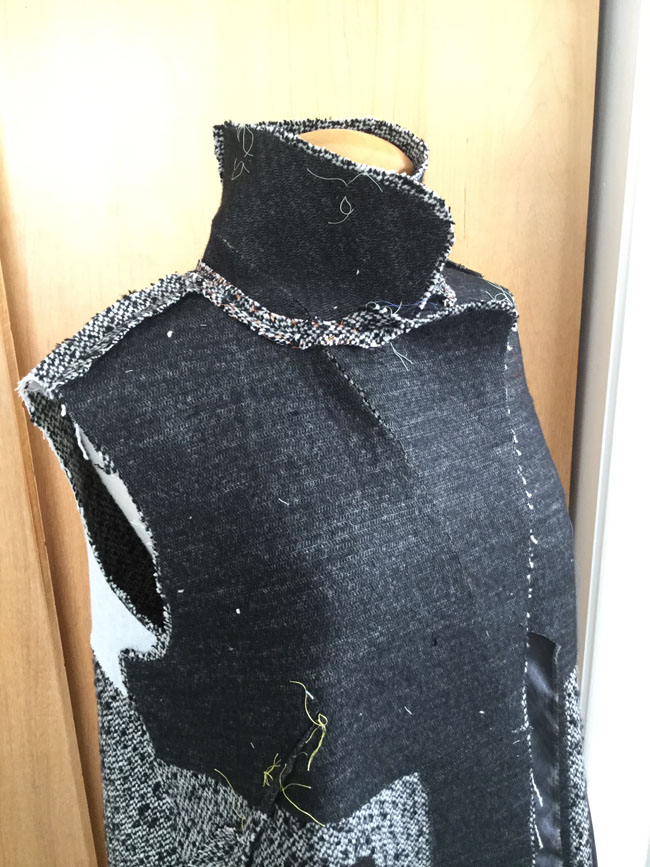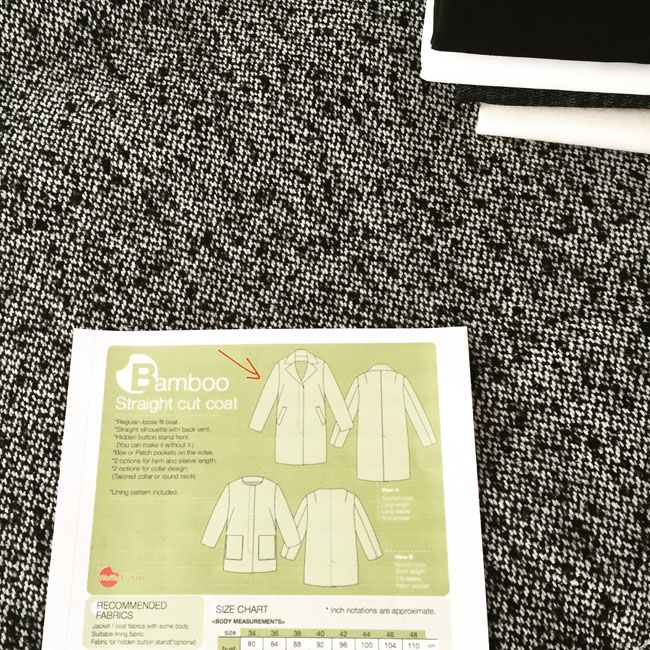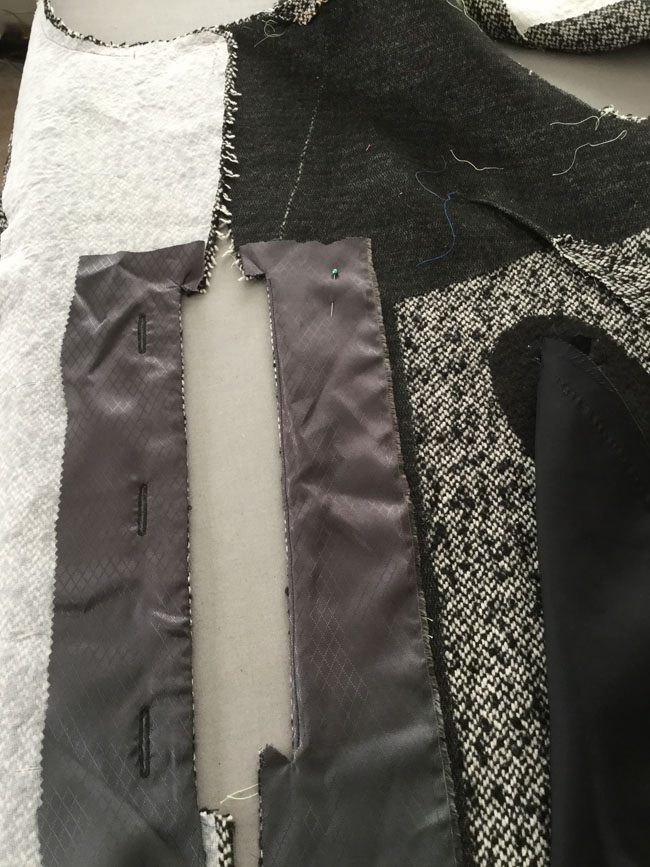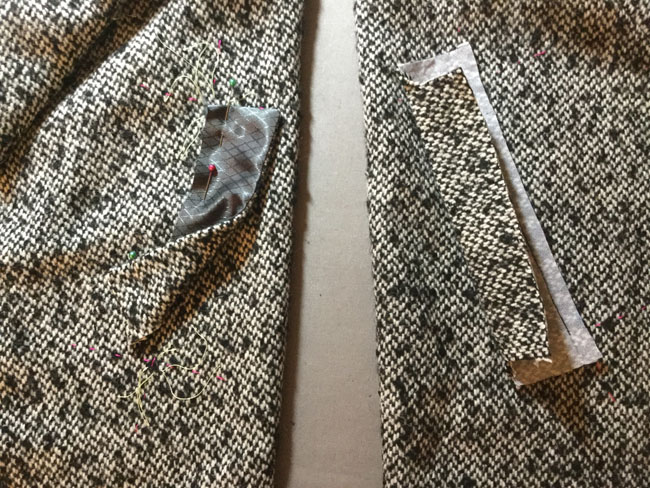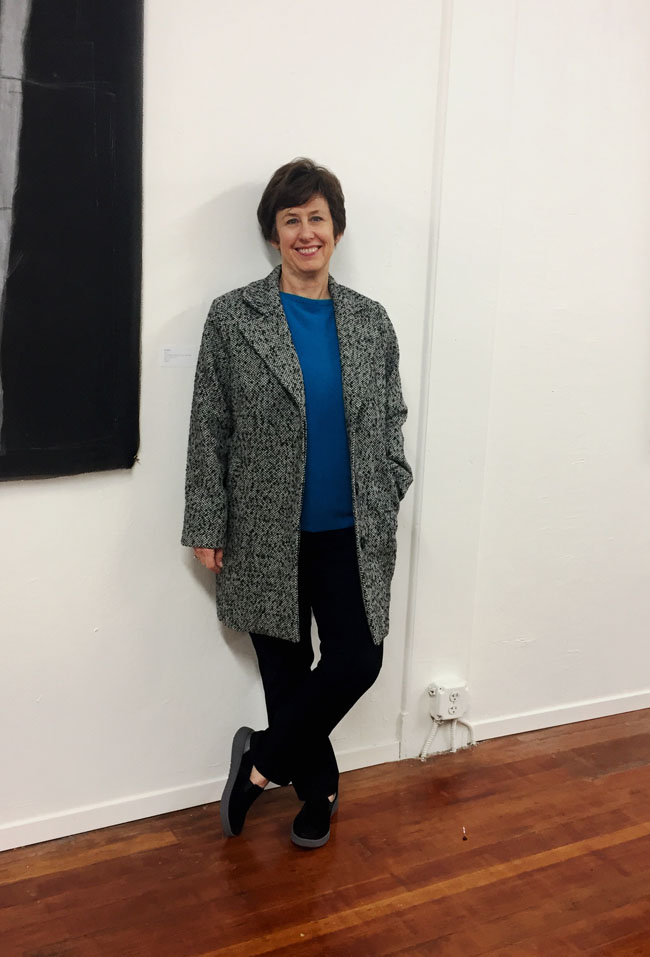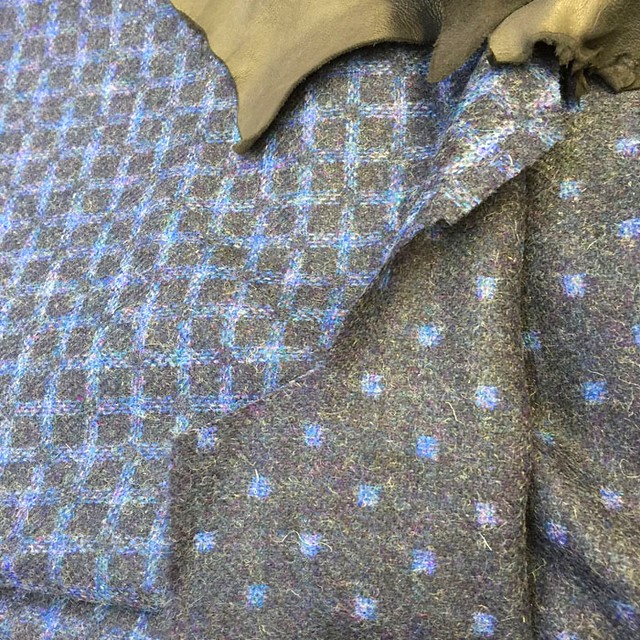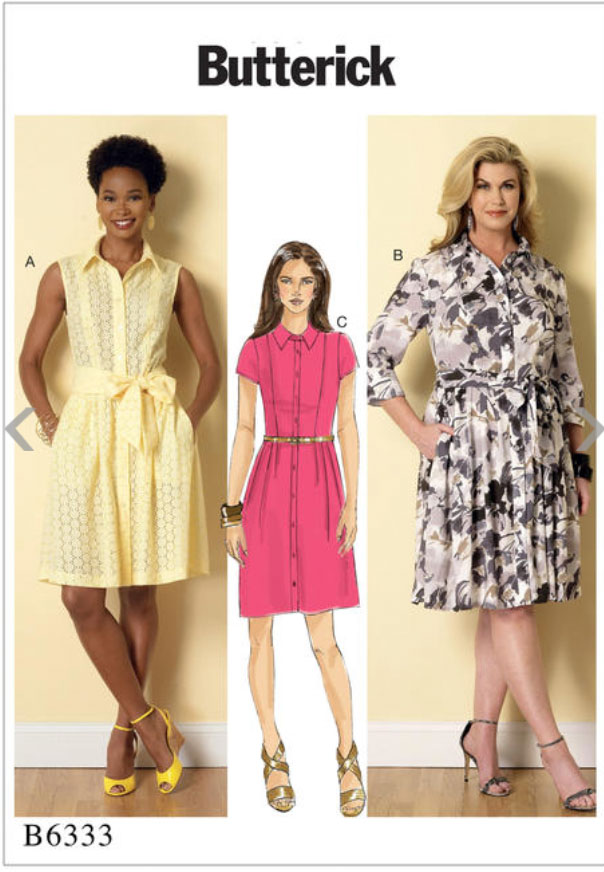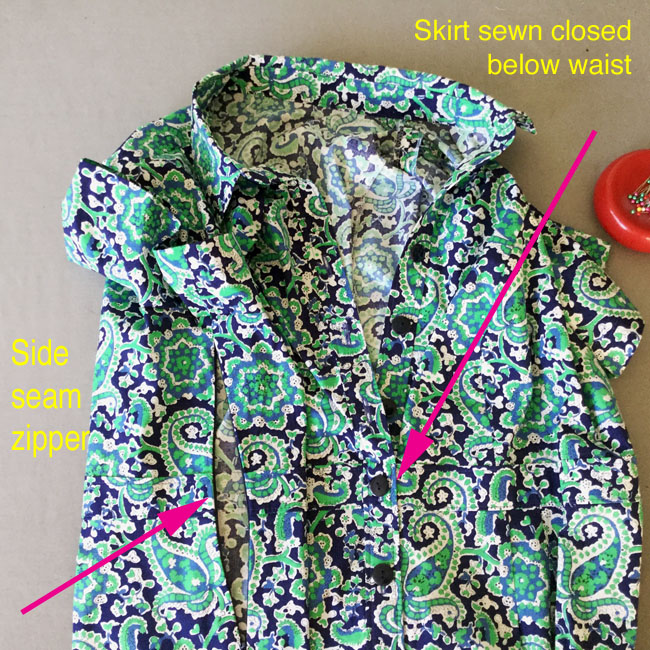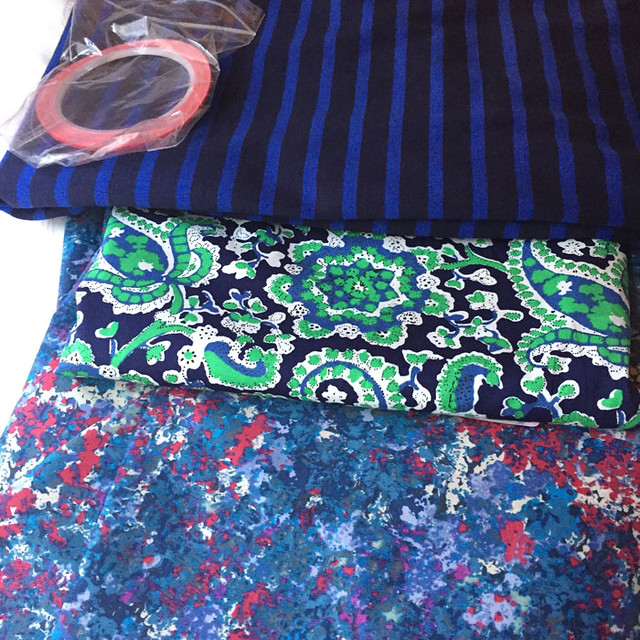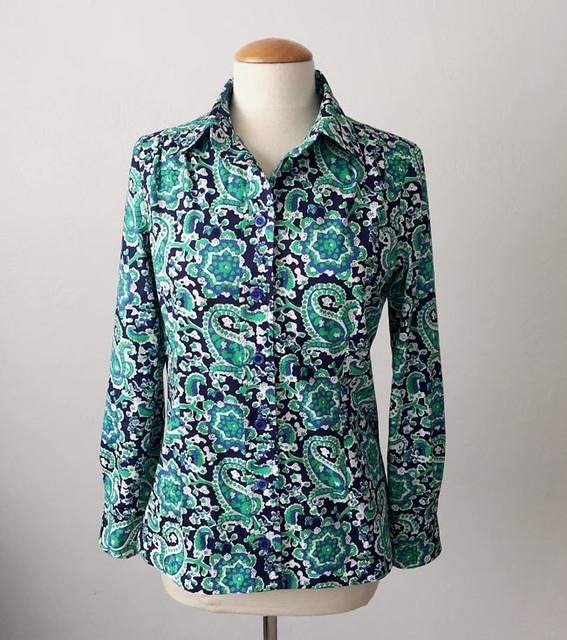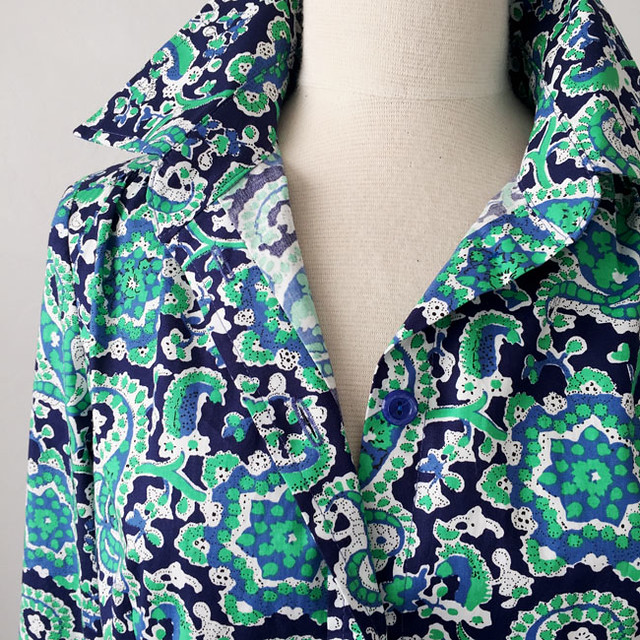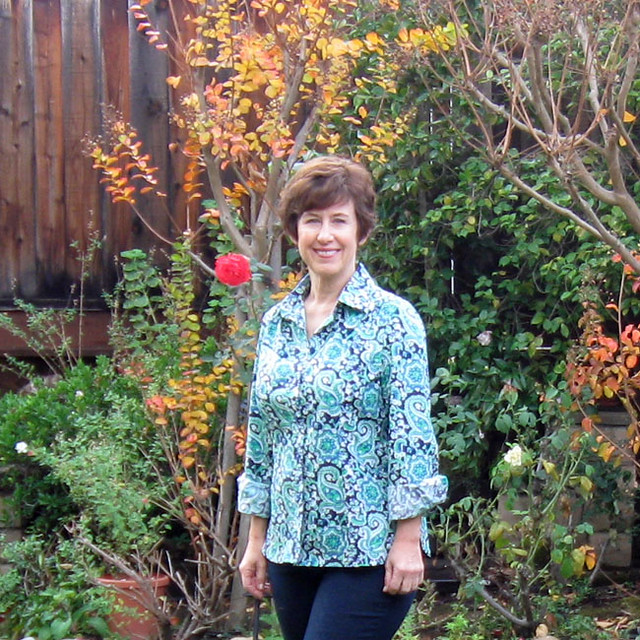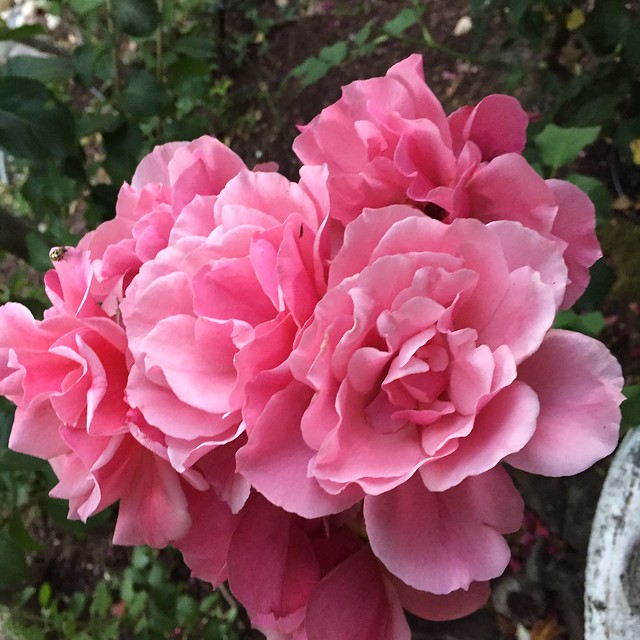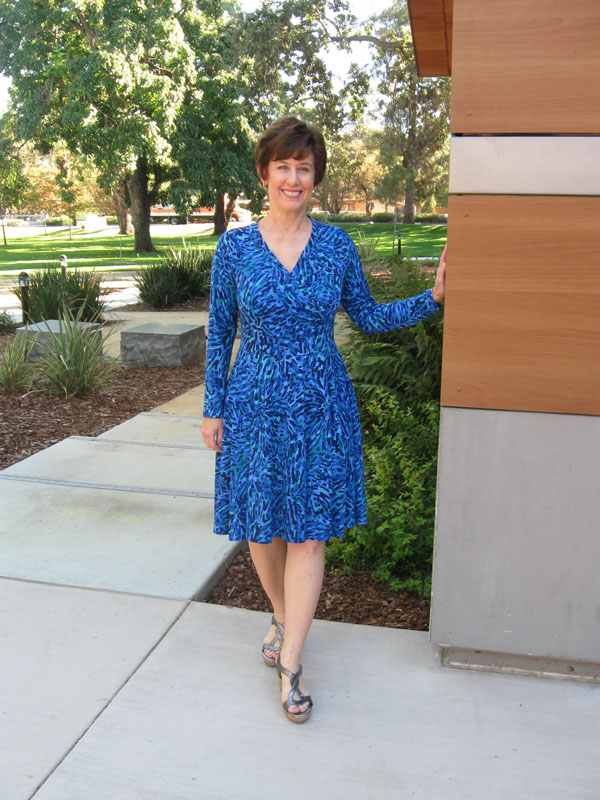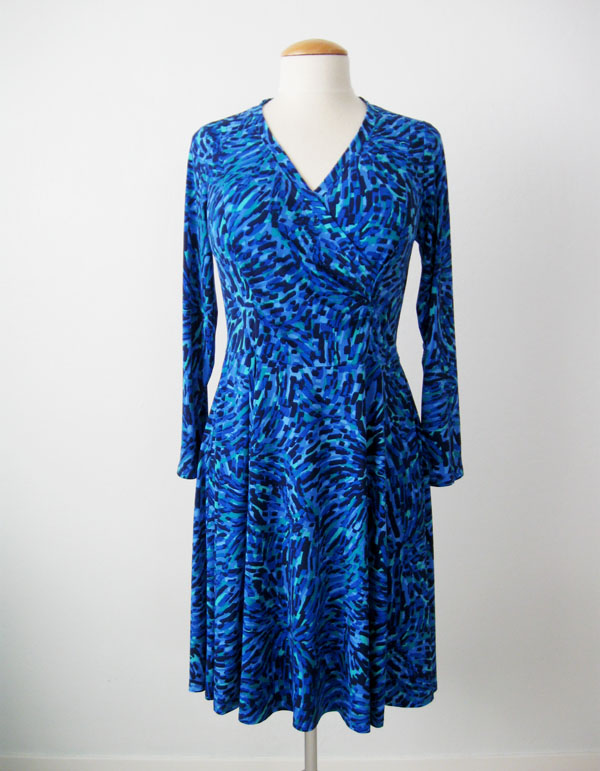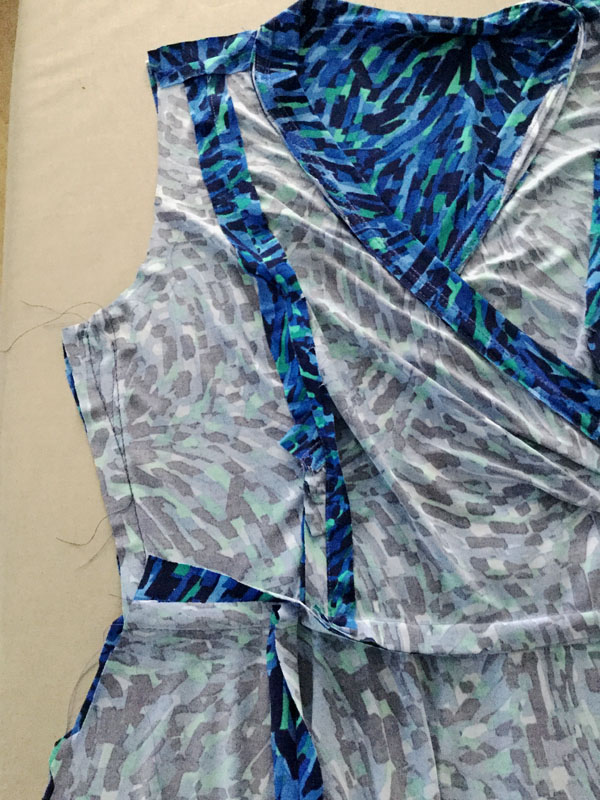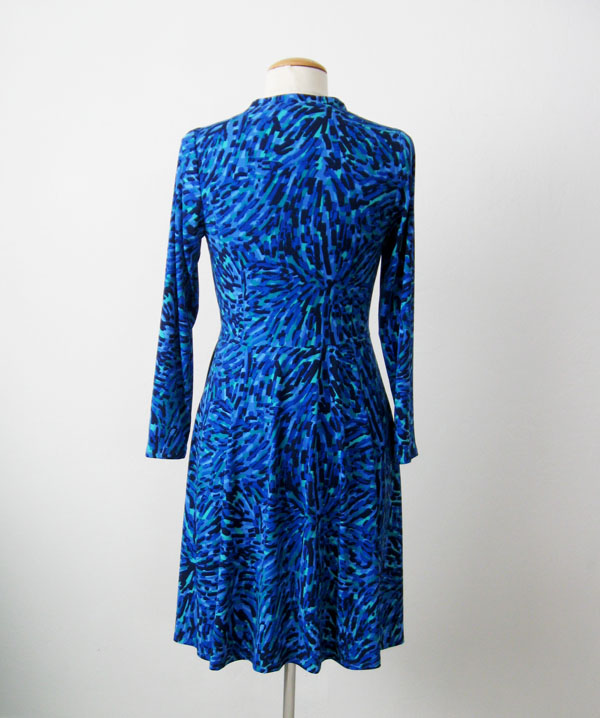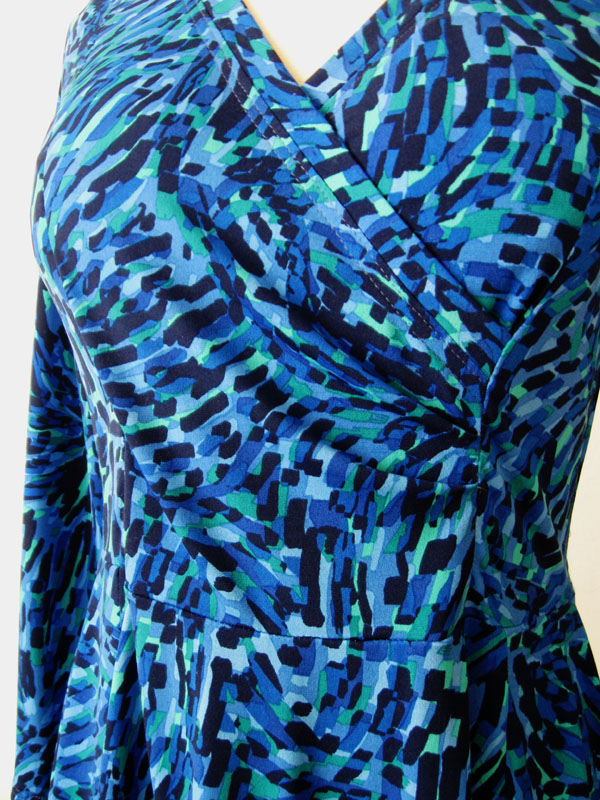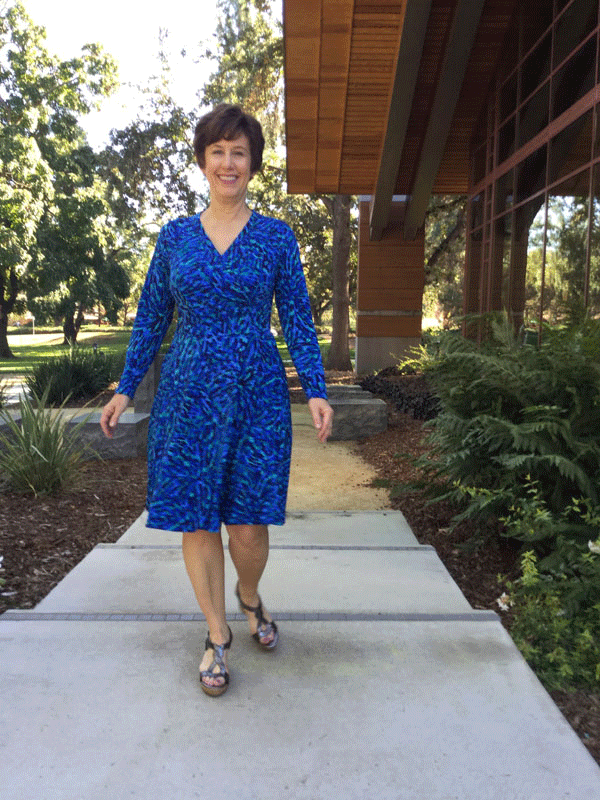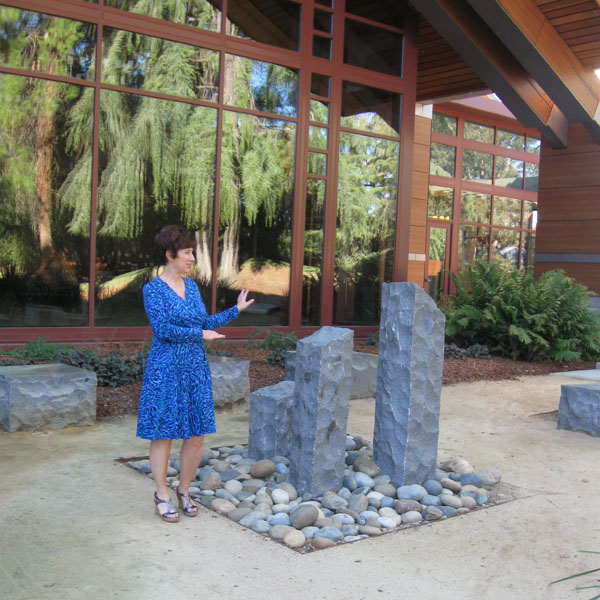The post title is "an almost free shirt." Almost free, because I think I paid maybe $ 2 for the fabric at a rummage sale. It said "shirt" the minute I saw it and then upon closer inspection it revealed that oh so nice feature - a touch of lycra! So a stretch woven cotton in bright fuchsia pink/black combo. Had to come home with me. With the use of my tattered Simplicity 2339 pattern which I probably paid 99 cents for originally and now have used at least 15 times I call that a good value for money. The button probably cost more than the rest of it and they were not exactly pricey either 😊.
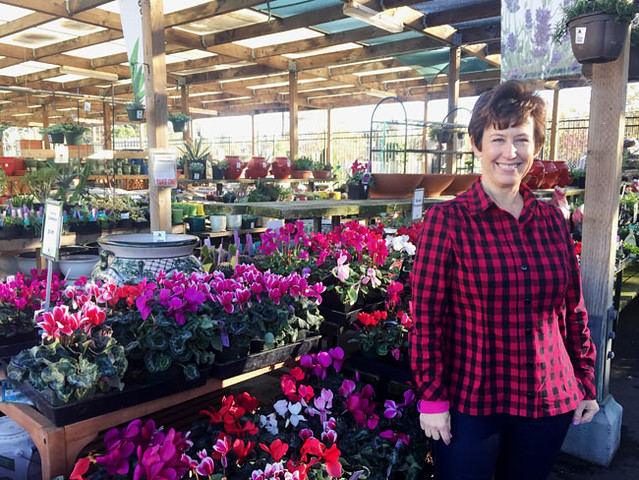
Some things I sew and just wear once in a while, other things are for special occasions, and then some get worn immediately and constantly until I'm just tired of them. I think this shirt will go into the 3rd category, a wear-it-all-the-time shirt at home just about anywhere.
Check things are a bit easier to match than actual plaids, but maybe possible they are more likely to show where things don't line up properly.
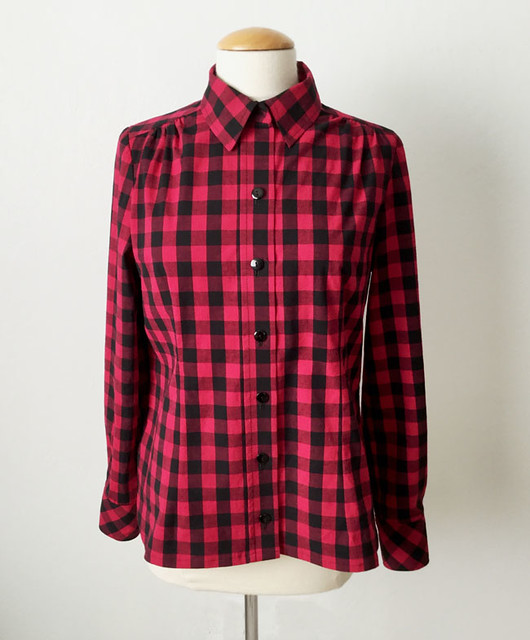
I'm super happy with this one, the front/sides/sleeves lined up very well. My top tip for button front shirts in plaid or check - Firstly - cut it out properly, perhaps even single layer and flip the first front over to cut out a mirror image for the 2nd front. But the actual tip is to carefully line it up when you sew on the buttons, and then do the hem AFTER the buttons are sewn on. So that you can align the front, have the buttons secure the crossways lines, and then have the hem not poke out at the bottom from the shirt side with the buttons. If it needs to be a bit shorter on that side then that is OK. No one will see it and it will look far better than having the underneath part sticking out when it is buttoned up.

I always put the yoke and cuffs on the bias because it just adds a little more visual interest.
Let's talk about perfection. And perfectionism. It has been fascinating to me to see what people in my classes obsess over and will not be satisfied with, and conversely what they say is just fine or good enough. And their judgements might not agree with how I would see something, but that is another good thing about making things by hand, you get to decide how you want things to be. However - like the hem edge I mentioned above, with some knowledge you can overcome a lot of these small issues that can detract from the overall effect. But it's also good to know where to pick your battles. Which brings me to my next photo.

Spot the difference? Note the placket on the cuff opening. I am showing you this as I receive so many wonderful comments and compliments on my sewing - but sometimes, as we all do, I make a mistake and then I just have to decide how to deal with it. I put one of the plackets on backwards, so it was going to end up on the inside of the shirt and rather than unpick the whole thing I just reversed the sides, resulting in a stumpy little placket on one side. But the amount of time and eyestrain to remove it just wasn't worth it to me. And I doubt it's visible when I wear the shirt. This is what I mean by pick your battles. If I had messed up the collar band, which is front and center on the shirt then I would likely remove it and start again. Something like a sleeve placket which can be adapted, is on the side of the garment and not really even seen - I can live with a shrunken and slightly lumpy placket.
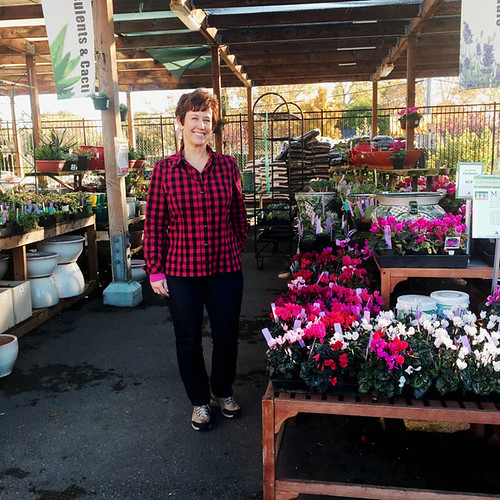
What a glamorous life I lead - taking blog photos at the garden store. Actually I couldn't resist snapping these standing next to the cyclamen. Those colors!
On my cutting table right now, so many things. Actually I have started a silk blouse using a different pattern - although it is a pattern repeat. The fabric is one that I bought at Mood in NY.

And I started with this silk to make the blouse first, as I am still playing around with options for the coordinating wool also purchased at Mood.
DO not Laugh at this! Which is a test muslin for a jacket. Sewn using two different scraps of cotton in order to look at the color block effect. Seems successful even in this goofy quilting cotton combo. And disregard the striped number underneath, a recent project, my first turtleneck which will appear in a future blog post.

This is McCalls 7549. When this pattern came out I saw a lot of people that put it on their "want to sew" lists and yet I find almost no completed versions. I think it has possibilities. If you do a screen capture of the tech drawing and put into photoshop you can use the paintbrush tool to fill in the shapes with color. I find this super useful for figuring out how to design color block garments. My test below. The fabric I will use is a tweedy plaid and dot pattern which might sound weird but just wait - I think it will be nice. (I certainly hope so after lugging this fabric home and then pondering it for more than a year).
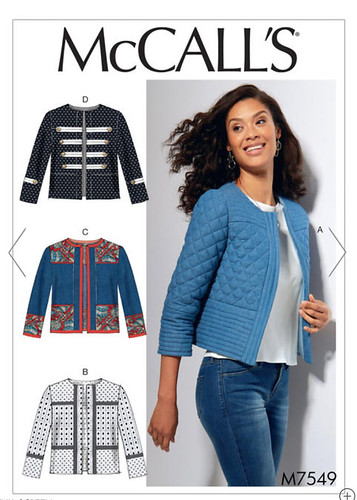

So that's the latest on what I'm sewing. Well actually, not by a long shot- so many things in the works but not a lot of photos to document. Although one other interesting item has me puzzling out the details which you can see here.
Hope everyone is having a great and relaxing Thanksgiving weekend here in the US and getting lots accomplished wherever you are.
Happy Sewing, Beth
today's garden photo, a velvety red rose that bloomed a few weeks ago among the salvia branches.
